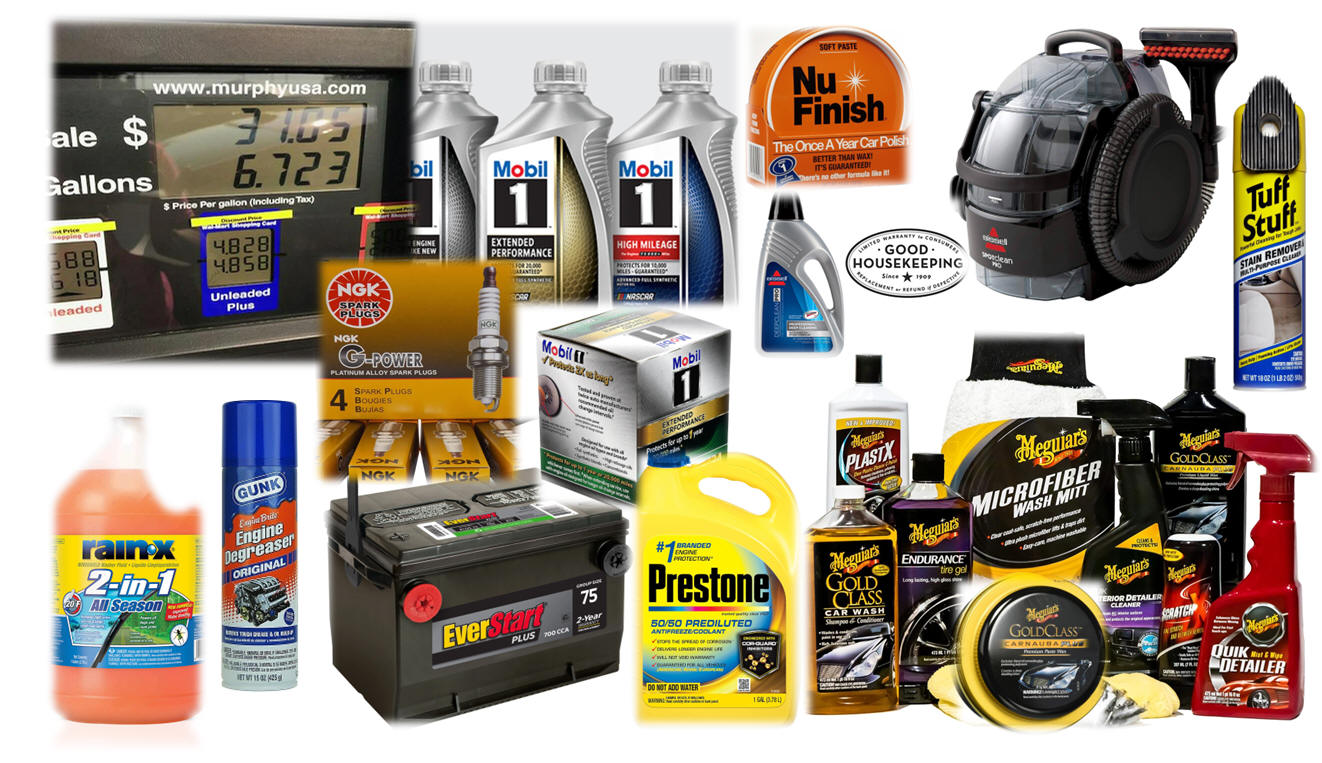Products I've Used Over Two Decades, and Feel Comfortable Recommending To You

Please note...
Over the decades, and through the near dozen vehicles I've owned and maintained, I used a barrage of products to keep said vehicles operating at their best, following manufacturers recommendations, most of the time.
When it came to replacing parts, through research, and advice shared by qualified auto technicians, I've used several brands that were not OEM, in the process, satisfying the quality I expect, meanwhile, saving on the expenditures... Unless it is an emergency, I never take short-cuts, or skimp on quality!
As you may have already noticed, I have owned a combination of domestic and import vehicles, ranging from American made, to Japanese and European.
Please do note that there are products that are EXCLUSIVE to certain makes and models of cars—due to the exclusive technologies used by said auto manufacturers in those specific vehicles, so, please make sure to ALWAYS study the user/driver manual that came with your vehicle before doing ANY maintenance, to insure that you do not cause any unintended costly damages... examples of this would be using the wrong antifreeze type, incompatible brakes or transmission fluids, and the unnecessary use of harsh cleaning solvents...
... NEVER use a "universal" product when your vehicle demands a specific product!
How To...
🔧 Identify car fluid leaks by smell and color.
🔧 How to diagnose the smells in your car.
Your Reoccurring Maintenance Schedule...
Monthly
Once per month, check the following:
- Engine oil level and condition.
- Transmission fluid level and condition.
- Brake fluid level and condition.
- Power steering fluid level and condition.
- Engine coolant level and condition.
- Washer fluid level.
- Windshield wiper condition.
- Tire pressure.
Top up fluids and tire pressures as necessary, and change worn wiper blades.
Every three to six months
According to your car service schedule:
- Change the engine oil and filter. Typically, it’s around every three to six months or 3,000 to 5,000 miles. However, some vehicles have extended intervals or use an oil life monitor.
- Check the condition of driveline fluids and top them up as required, including transmission, differential, and transfer case fluids if equipped.
- Rotate the tires and inspect the condition. On average, a tire rotation is due every 5,000 to 8,000 miles.
- Inspect the condition and level of brake pads and rotors/brake shoes and drums. Clean away brake dust and adjust as required.
- Check the battery charge and condition. Clean corrosion from the terminals if required. Battery replacement tends to be required every three to five years.
- Inspect the belts and hoses for condition.
- Check steering and suspension components for damage or looseness. Lubricate any points that have grease nipples.
- Inspect for leaks around your vehicle, making note of any repairs that are urgent or will be required soon.
Seasonal and Periodic Maintenance
Different seasons can bring unique challenges for your vehicle. Preparing in advance can save you a headache down the road.
Winter Preparation
Prevent cold weather surprises by checking your antifreeze, heater and defroster systems, and battery before winter arrives, and do the same for the windshield wipers. Swap to winter tires where necessary and carry out an early-season check on important components.
Summer Maintenance Tips
High temperatures can be just as hard on your vehicle as cold ones. Inspect your air conditioning, coolant, and tires, especially if you’re taking a long road trip in hot weather. Don’t forget to keep your car shaded when possible.
Extended Interval Checklists
Some services have extended intervals. Perform the following according to your car’s maintenance schedule:
- Replace the engine air filter annually.
- Replace the cabin air filter annually, if equipped.
- Change the brake fluid, roughly every two years or 25,000 miles.
- Change the power steering fluid, roughly every three years or 40,000 miles.
- Replace the engine coolant, approximately every five years or 100,000 miles.
- Replace the timing belt if equipped, approximately every five years or 100,000 miles.
- Change the spark plugs every 60,000 to 100,000 miles.
- Replace the transmission fluid (and filter if equipped). Service intervals vary widely based on the vehicle, from every 20,000 miles to 100,000 miles.
DO NOT believe in any user manual instructions that claim that the transmission fluid, or for that matter, any lubricant, or hydraulic fluid, used by your vehicle is "life time..." there is no such a thing! Most manufacturers are probably alluding to the estimated service duration prior to the manufacturers documented obligations (guarantees/warrantees) end... It's to their advantage that you do not maintain your vehicle well, afterwards, for that simply means that you will soon be purchasing a new vehicle, which is what they want. Moreover, always keep in mind the following two terms: Engineered Obsolesce.
